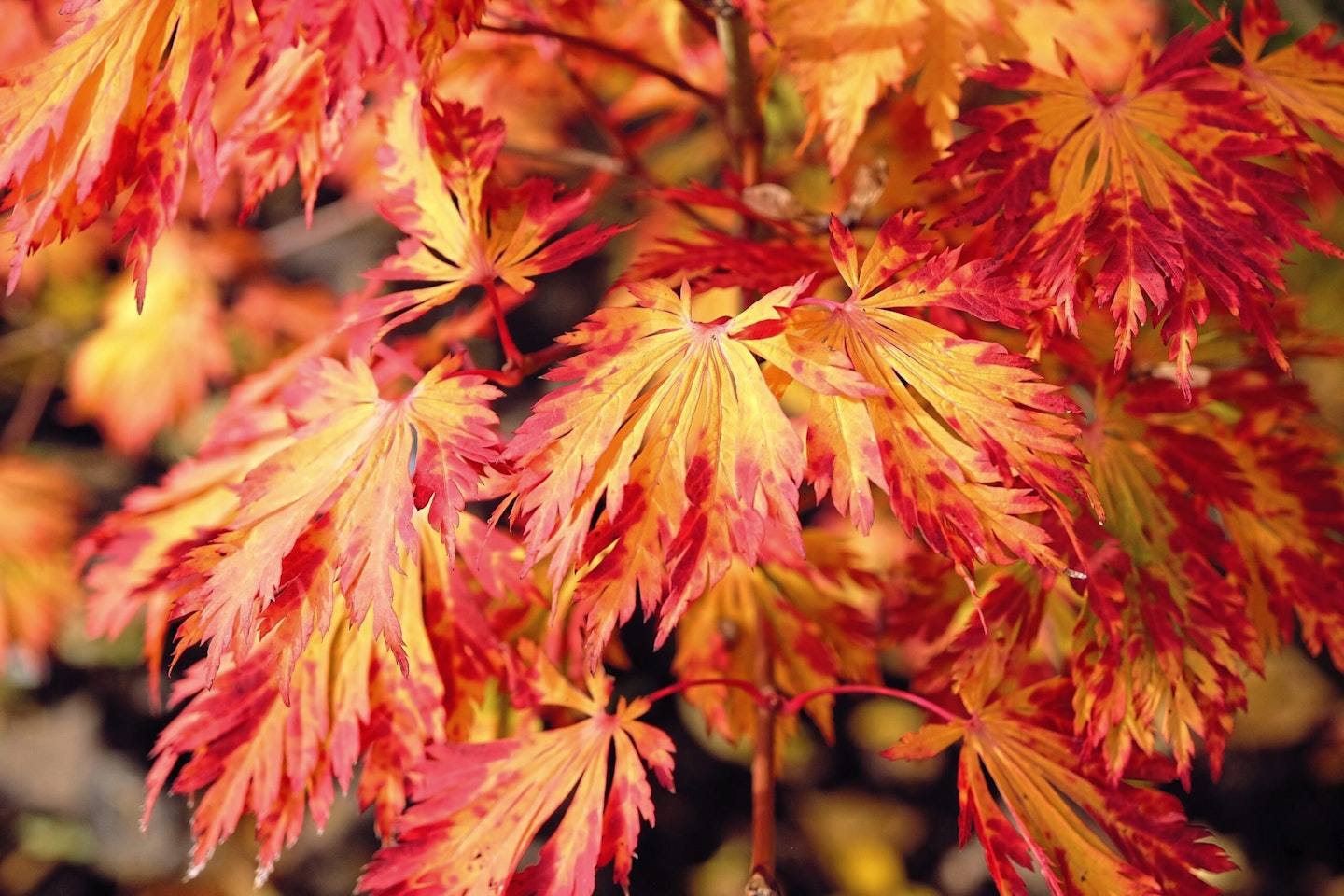
Trees and shrubs with handsome foliage are invaluable as part of the garden’s framework, and acers – also known as maples – are up there with the best.
Their attractive lobed leaves can be coloured or variegated, looking handsome from spring to autumn, or develop wonderfully vibrant autumn colours to round off the season with a fiery finale. A handful of maples have coloured or patterned bark, too, and these just keep on giving right through the year.
Originating from many Northern Hemisphere countries, acers are hardy and deciduous, and comprise a huge and diverse group of around 100 species that range in size from forest giants right down to amenable shrub-sized bushes.
Familiar acer trees that are native to, or naturalised in, the UK, are the sycamore (Acer pseudoplatanus, and the green-leaved species is often cursed by gardeners as its winged seeds pirouette across the skies to seed sneakily in gardens) – and the field maple (A. campestre), widely planted in hedges where small leaves turn a beautiful butter-yellow in autumn. Other, large acers that are popular for parks and large-scale landscaping include the silver maple (A. saccharinum) with silvery leaf undersides that show off when ruffled in the breeze, and the Norway maple (A. platanoides), which has large leaves in greens, purples and variegations.
For small to medium-sized gardens, there’s a wealth of lovely acers to choose from that have ultra-desirable attributes including beautiful foliage, decorative bark, coloured stems or handsome winter silhouettes. The large group familiarly known as Japanese maples, which are varieties of Acer japonicum and A. palmatum, score high on the desirability scale, with Acer palmatum in particular having incredible diversity in its foliage shapes, colours in many shades of greens, reds and purples, and a range of different leaf sizes.
They do, however, come with the large caveat of site suitability, because their delicate leaves must be sheltered from winds and strong sun that would ‘burn’ or scorch the foliage. However, as the smaller Japanese maples live happily in containers, that does give much flexibility in finding their happy place. Making the most compact trees are the mound-forming types that slowly grow to a couple of metres in height and spread.
Others are upright or wide spreading, gradually attaining anything from 2–8m in ultimate height, depending on the variety. For the best colours and most reliable performance, buy named cultivars, which are mostly produced by grafting, though note that the production process and naturally slow growth rate mean that Japanese maples don’t come cheap. If the budget permits, it’s worth pushing the boat out and buying a larger ready-grown specimen for that immediate ‘wow’ factor!
While acers with coloured or variegated leaves make a striking display from spring to autumn, those with attractive bark – either colourful, patterned, or peeling – look handsome all year, perfect for smaller spaces where big plants really do need to earn their keep. These include the ‘snakebark’ maples Acer pensylvanicum and A. davidii, with bark beautifully striated in green and white, or the stunning coral bark maple. The paperbark maple (Acer griseum) is another beauty, if you don’t mind waiting for its slow growth to mature. With so much variety, there truly is an acer for every garden.
